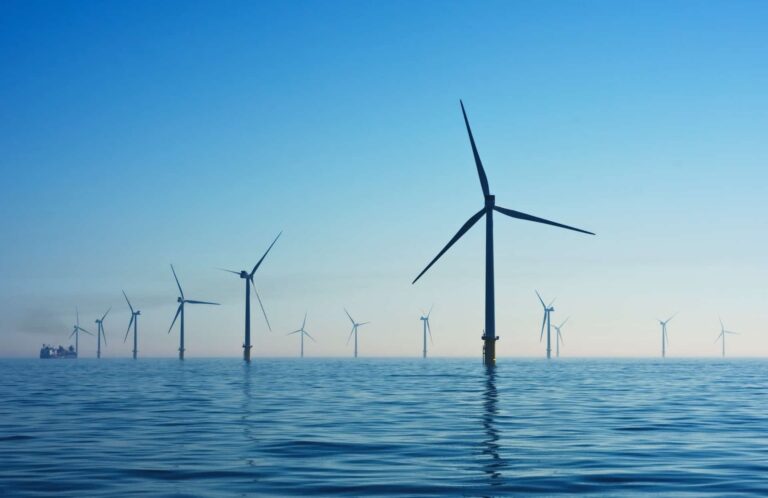On the one hand are the announcements, which are always very ambitious. And on the other hand is reality, which often contradicts international catwalks. And so while in Ostend, Belgium, leaders of nine European countries bordering the North Sea sign an agreement to exploit the potential of the marine region’s offshore wind farms by building what Belgian Prime Minister Alexander De Croohas envisioned as “the largest wind power hub in Europe,” the German press is fleecing what is really moving on the concrete ground.
Table of Contents
The project to make the North Sea the world’s leading wind power hub
The new project launched in Ostend aims to generate with gradually increasing output more than 300 gigawatts (GW) of electricity per year by 2050. The projected cost of more than 800 billion euros is funded by the European Union.
Germany is one of the nine countries in the project. Seven of them are members of the European Union (in addition to Germany, France, the Netherlands, Luxembourg, Denmark, Ireland and precisely Belgium, the conference host), the other two are not. Britain, fresh from Brexit, and Norway, one of the big global energy players. And now the most important for Europe after the eclipse of the Russian horizon.
Chancellor Olaf Scholz, present in Ostend on behalf of his country, was as always prodigal with promises. “We have to get faster,” he said referring to the many road maps announced in recent months for marine wind farm projects. “We can’t waste any more time in identifying areas, in permitting, in building plants and networks.”
Scholz went on to mention that many laws in the EU and Germany have been changed to facilitate the expansion of renewable energy. And he stressed the importance of the presence of industrialists at the conference-summit in Ostend, “because decisions must now involve corporate headquarters.”
Grid expansion must proceed as quickly as production expansion, the chancellor added. And “this is because industrial centers are often not located on the coast.”
Common-sense directions, except that uttering them was not an energy sector analyst. But the man (almost) alone at the helm of the giant administrative machine of the region’s most powerful economy.
The countries involved in the North Sea wind hub project
So far, on the wind power front, big, sometimes bombastic promises have resulted in modest facts. “The expansion of offshore wind power in Germany has been slow in recent times.” Indeed, comments the Tagesschau online newspaper, the news outlet of Germany’s first public channel Ard. And while last year the value of offshore wind power in the nine states present in Ostend was about 30 gigawatts, Germany so far has about eight gigawatts of offshore capacity.
The Federal Republic ranks second in Europe, after Great Britain, which has 14 gigawatts. While France, Norway and Ireland each produce less than one gigawatt. This would seem like a satisfactory result. Were it not for the fact that Germany, unique among all the states involved, had announced its momentous energy turnaround plan, the Energiewende envisioned by Angela Merkel as a quid pro quo for getting off nuclear power, a full 12 years ago with great fanfare.
That was in 2011, in the aftermath of the Fukushima accident. Today, nuclear power is a closed story and that of wind turbines an adventure just beginning.
Read also: Renewables, why is wind power the energy of the future
The controversies about the project
It has to be said that the current government cannot take on the delays accumulated by an energy turnaround administered for a long time by the Merkel governments. Whose inconsistency on the concrete level of infrastructure modernization (whether commercial transportation or energy changes little) only now appears to be everyone’s discovery.
And it is also true that under the impetus of Green Minister Robert Habeck, regulations have been changed (even to the chagrin of many environmentalists) to speed up procedures for new wind farms. Both onshore and offshore.
But when it comes down to it, the results are still not in line with ambitions. “The planning of a wind farm already takes three or four years on land. Offshore plants take much longer,” explained Paul Kühn, an energy expert at the Fraunhofer Institut.
The latest law passed by the government, with reference to onshore wind, directly commits the responsibility of the states and requires that 2 percent of the land be allocated to wind turbines. Currently, only about 0.8 percent of federal land allocates for onshore wind energy. And in reality 0.5 percent of it is used.
These are numbers that make wind power analysts and entrepreneurs skeptical about the new projects announced in Ostend. Which moreover trace similar resolutions drawn up by a quartet of countries last year in Ebsbjerg, Denmark. Four countries were also present in Ostend: Germany, Denmark, the Netherlands and Belgium.
There, too, in the city home to Danish wind giant Vestas, a plan was launched to quadruple current offshore wind capacity in eight years. By aiming to produce 65 gigawatts in total. A first step before launching toward multiplying by ten by mid-century: 150 gigavatts in 2050.
Read also: The 7 leading countries in wind energy production












